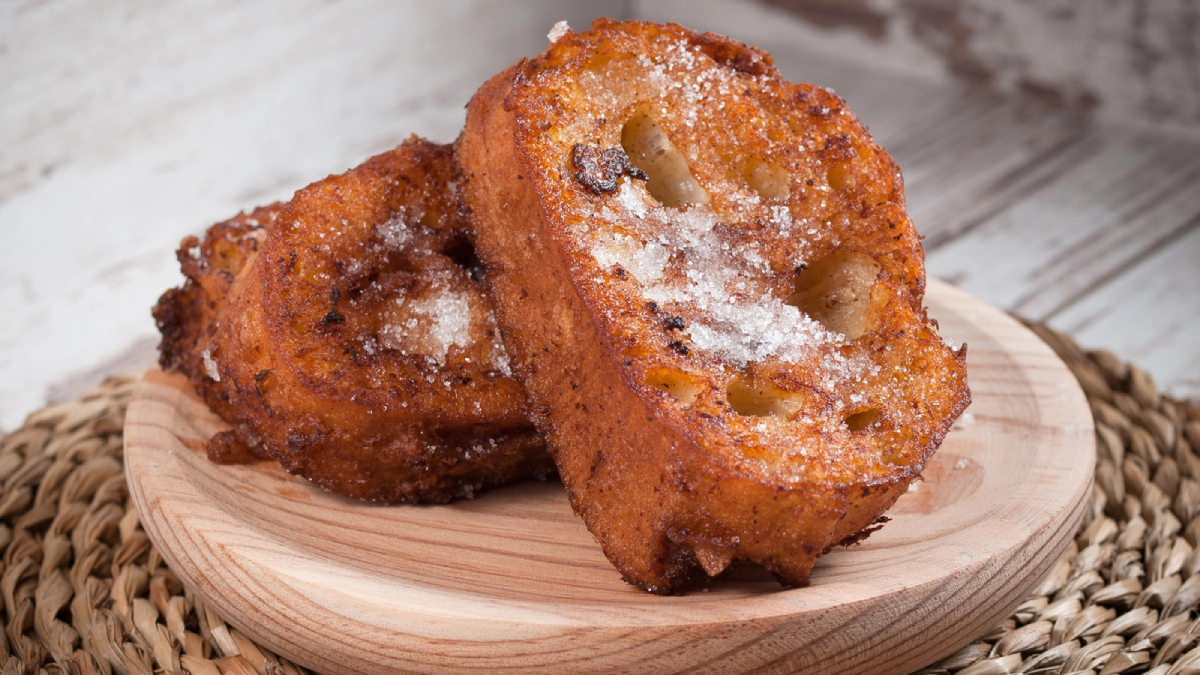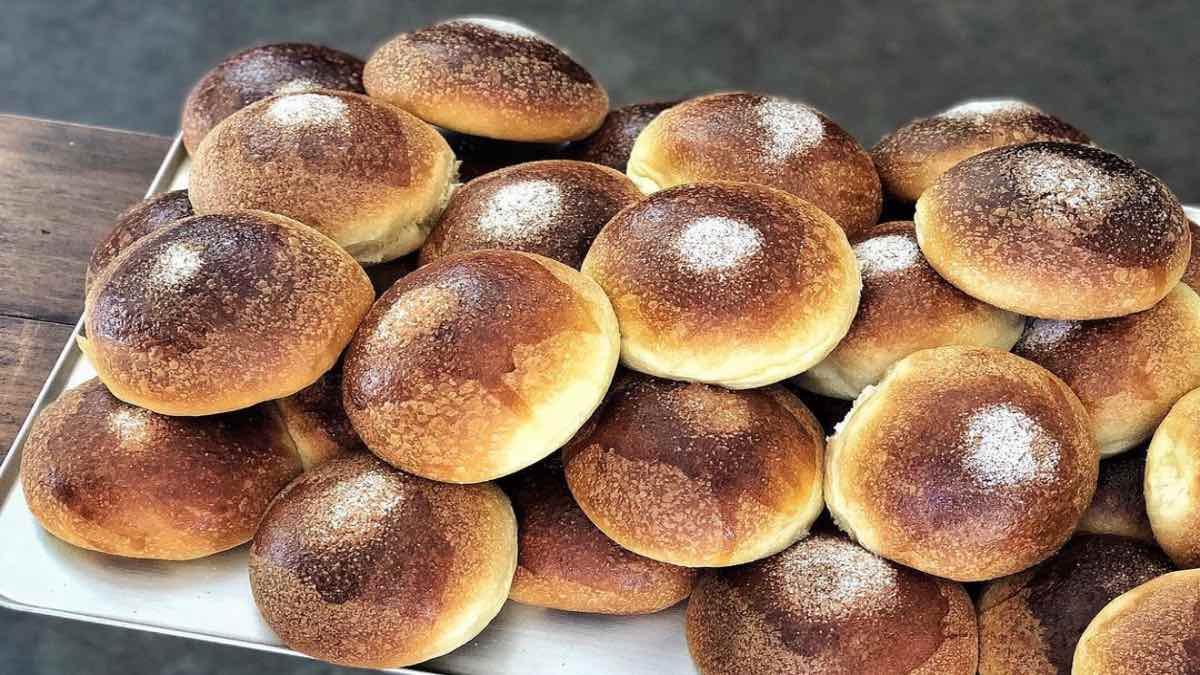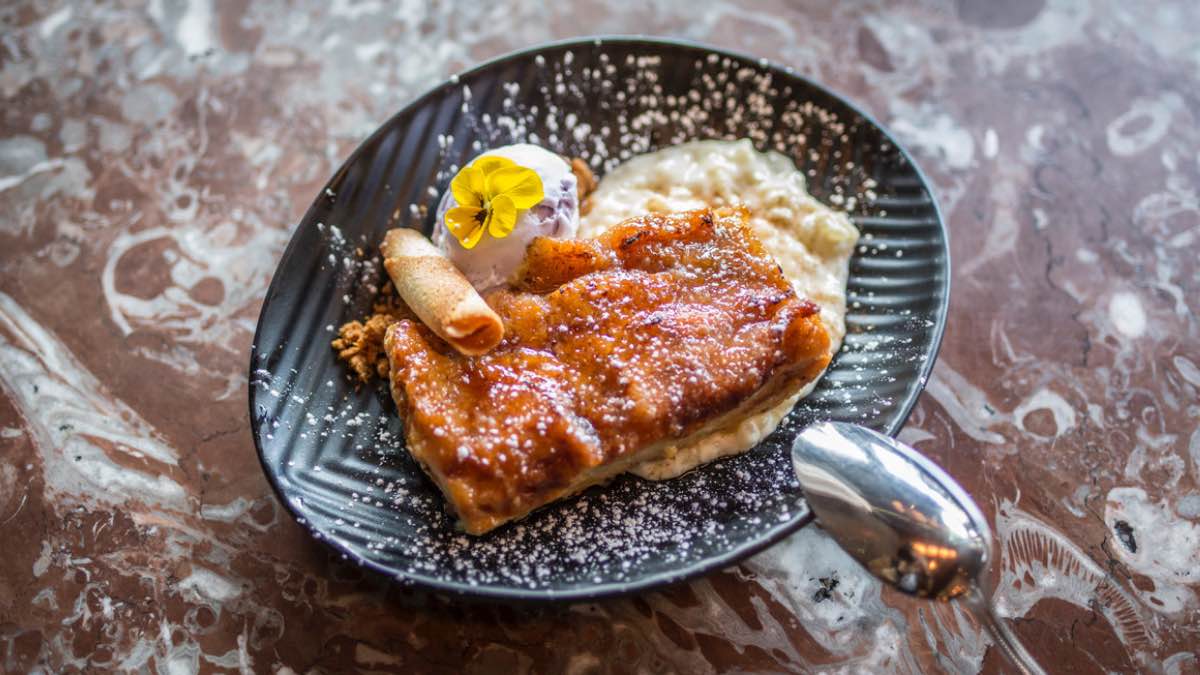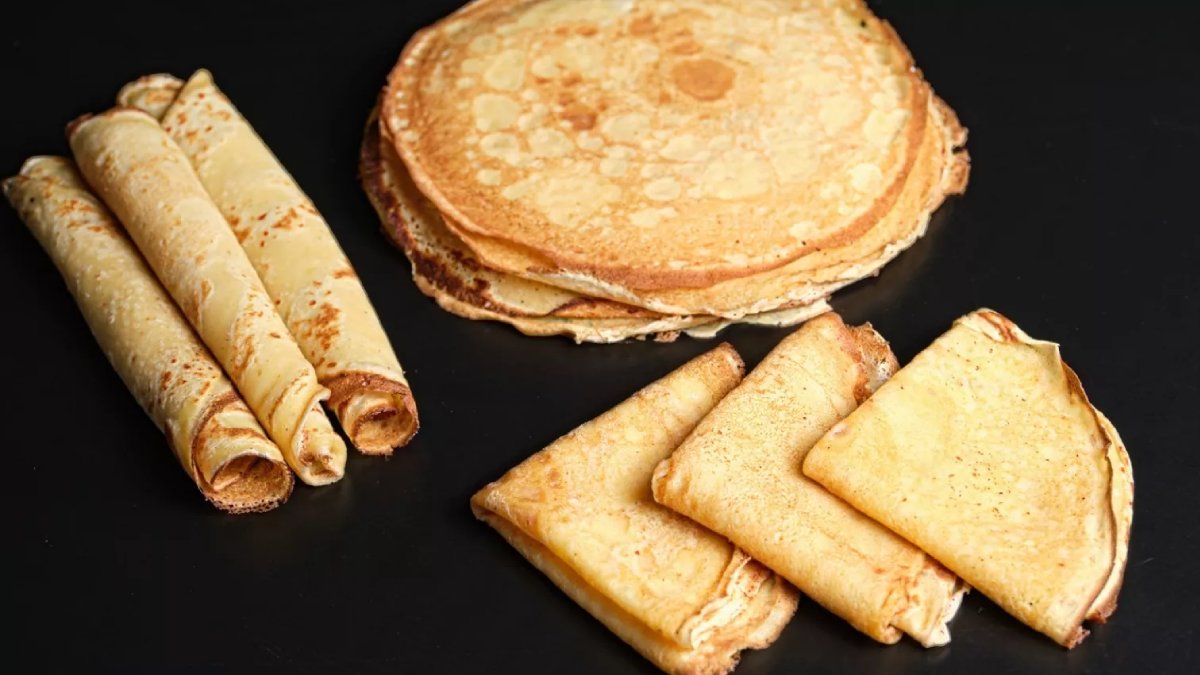Click here to read the Spanish version.
In order not to lose the good habits of Easter, we bring you a classic recipe for torrijas in the style of Pepe Rodríguez, a chef who prepares one of the best torrijas. So with the recipe we share below, you’ll be left with some delicious classic torrijas.
Recipe for Pepe Rodríguez-style torrijas
Ingredients:
- 1 l infused milk
- 1 loaf of toast
- 3 eggs
- Oil
- Sugar
- Powdered cinnamon
- To infuse the milk:
- 1 l of whole milk
- Lemon zest
- orange zest
- 2 cinnamon sticks
- 1 vanilla pod
- 100 g sugar
- For the syrup:
- 1 l of water
- 75 g white wine
- 250 g sugar
- Lemon peel
- Orange peel
- Cinnamon stick
Preparation:
- To infuse the milk:
- Bring the milk to the boil with the rest of the elements in this section. Set aside.
- For the syrup:
- Bring the water to the boil with the rest of the ingredients in this section. Once boiling, also set aside.
- For the torrija:
- Dip the bread into the infused milk, turning it over so that it soaks in well.
- Beat the eggs and add a spoonful of the infused milk.
- Dip the bread in the eggs and fry in plenty of oil. Set aside on absorbent paper.
- Dip them in the tempered syrup.
Curiosities about torrijas
To find out a little more about the origin of this typical sweet of our gastronomy, the restaurant Bodega de los Secretos has told us some interesting facts about torrijas. Also, if you want to try some traditional torrijas, they serve them on their menu all year round and they are delicious.
Did you know that the origin of torrijas is linked to a Roman invention? Moreover, for centuries it was considered a “poor man’s” food, as it was a cheap product that helped to recharge one’s batteries with two basic foods (bread and milk). As it was so satiating and calorific, it began to be consumed during the period of Lent, in order to compensate for the times of abstinence that religious tradition dictated.
There are other theories that point to its origin for a different reason. They say that torrijas began to be prepared to ease the pain of mothers giving birth and to favour their recovery. At the beginning of the 20th century, they lost part of their religious connection and began to be common in Madrid taverns accompanied by a glass of wine.
For many connoisseurs, one of the keys to good torrijas is the bread. They usually advise that it should be made with bread that is three days old. In the Basque Country they have the Carnival toast, made with brioche bread, which is a recipe very similar to torrijas. Other countries have their own particular version of torrijas. For example, French pain perdu, Portuguese rabanadas or American french toast.





